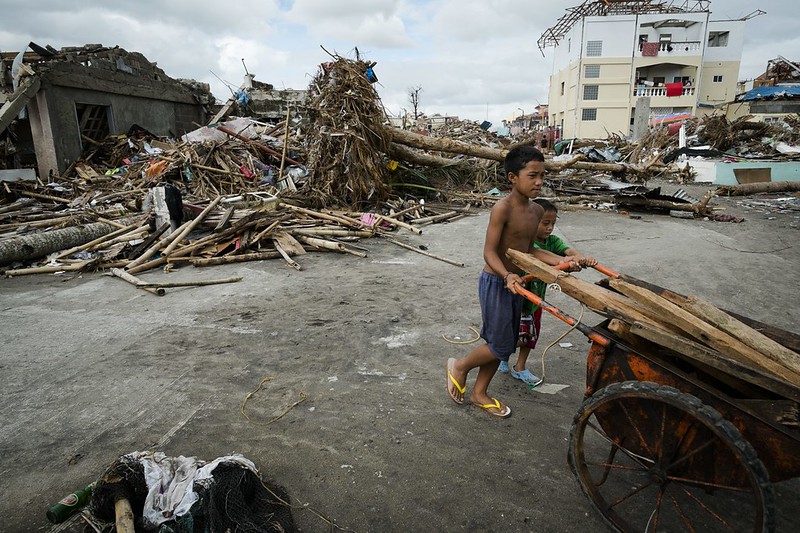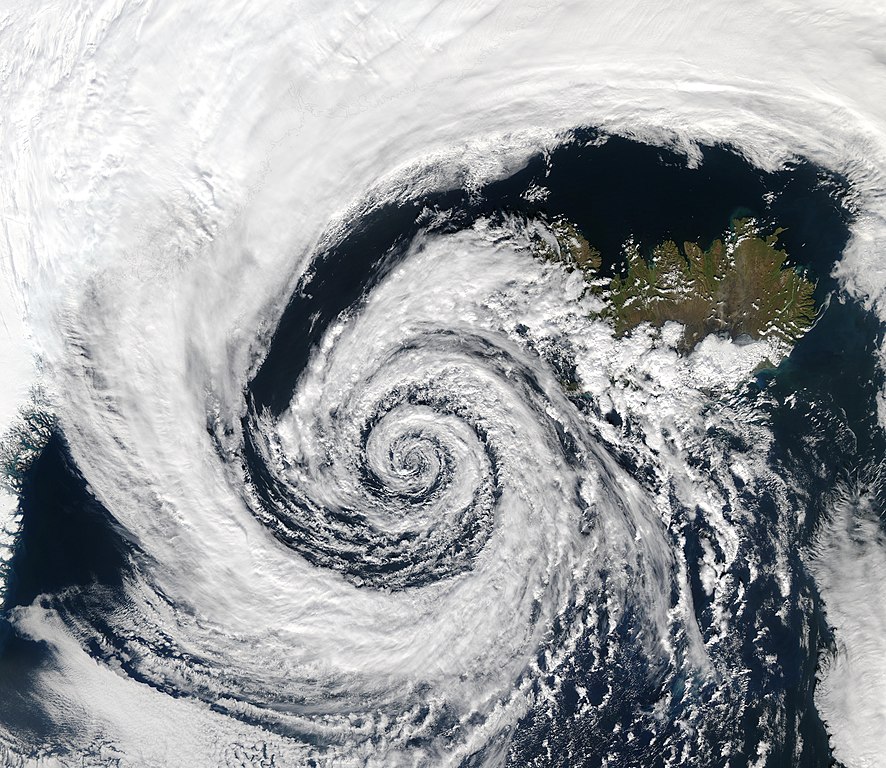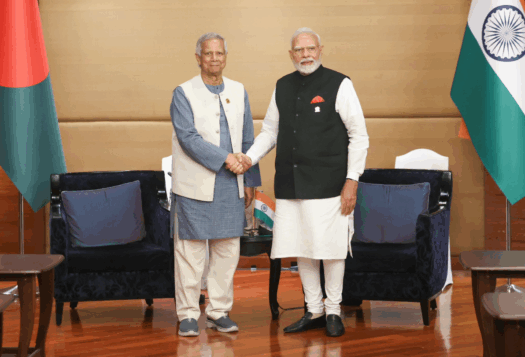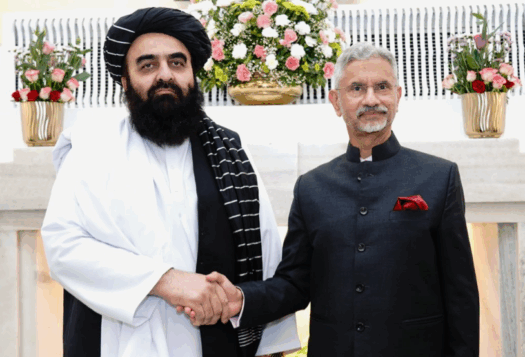
Earlier this year, India launched ‘Operation Karuna’ to assist cyclone-hit Myanmar, where Indian naval ships carried emergency relief materials to Yangon. This humanitarian effort came close on the heels of India becoming one of the first countries to assist the Turkish government in humanitarian efforts through its initiative ‘Operation Dost’ following the deadly earthquakes in the country in February 2023. The initiative was reminiscent of the Indian government’s ‘Operation Insaniyat’ in 2017, which sent aid to Rohingya refugees in Bangladesh, or earlier, when the government evacuated nearly a thousand non-Indian nationals from 41 different countries during the war in Yemen in 2014. These operations remind the world that Humanitarian Assistance and Disaster Relief (HADR) is a key element of Indian foreign policy.
While India’s HADR activities have largely focused on its neighborhood, Beijing’s growing presence in South Asia and the Indo-Pacific has increasingly led to New Delhi viewing HADR activities through a strategic lens. India and China recognize the geopolitical and national security advantages that HADR activities confer, as India is using HADR as a means to manage Chinese influence in the region. However, as the two countries have strengthened their HADR practices in South Asia and the Indo-Pacific, the emphasis on competition may limit the possibility of using HADR as a tool for diplomatic cooperation.
…This humanitarian assistance initiative enabled India to project its soft power as it rejected foreign aid during the crisis to demonstrate that it had the prerequisite resources and manpower to manage the crisis….
India’s History of HADR
HADR came to the fore within the rubric of Indian foreign policy in the aftermath of the Indian Ocean tsunami in December 2004, when the Indian Navy provided holistic intervention in the form of rescue and relief operations, task disaggregation, reconnaissance, and rescue of survivors in Sri Lanka, the Maldives, and Indonesia. This humanitarian assistance initiative enabled India to project its soft power as it rejected foreign aid during the crisis to demonstrate that it had the prerequisite resources and manpower to manage the crisis. In fact, to navigate the crisis, India employed indigenous resources in the form of Indian naval ships, aircraft, and helicopters to provide relief and assistance to populations of different neighboring countries like Sri Lanka and Maldives during the disaster.
The Indian Ocean Tsunami demonstrated India’s disaster preparedness and HADR capabilities. The Indian Navy was the first international navy to commence rescue operations within 12 hours of the tsunami. It was also eventually invited to be a part of the Tsunami core group that was put together by the United States to provide relief and assistance. Subsequently, India provided humanitarian assistance to its South Asian neighbors during natural calamities (Bhutan, Bangladesh, Nepal, and Sri Lanka) and security conflicts (Afghanistan, Myanmar, and Sri Lanka) over the last decade, cementing its position as a first responder in crisis.
China’s Securitization of HADR
Although each country’s respective military wings lead their HADR operations — the Headquarters Integrated Defense Staff (HQ-IDS) in India and the People’s Liberation Army and Navy (PLAN) in China — HADR continues to be a domestic organization within India, with the National Disaster Relief Force (NDRF) leading HADR activities nationally. While Indian HADR efforts are usually non-intrusive and are geared towards assisting affected nations, China has offered humanitarian assistance on an ad-hoc basis.
China has often disregarded abiding by principles of military participation in HADR, such as the timely deployment of military assets, and multilateral coordination with other foreign militaries and other civilian organizations. For instance, during Typhoon Haiyan in the Philippines in 2013, China delayed sending aid initially due to an existing maritime conflict with the Philippines in the South China Sea. In fact, China only provided limited humanitarian assistance and deployed its hospital ship “Peace Ark” in the Philippines after facing international criticism.

China has used HADR to increase its influence in South Asia as well. Chinese humanitarian intervention during the Nepal earthquakes in 2015 was a matter of concern for India and other Western powers since China potentially compromised Nepalese sovereignty. In fact, the Chinese People’s Liberation Army (PLA) “treated (its) own sector as sovereign territory, rather than an area where they would lead the coordination of response. The PLA also refused to allow other foreign military responders access to its area of operations, for it felt that doing so might harm ‘China’s image,’ effectively treating its response sector like a “sovereign territory” within Nepal. Furthermore, despite the magnitude of the earthquake, in order to appease China, Nepal not only refused aid from Taiwan but also asked the Indian army rescue team not to fly near China’s airspace. Chinese machinations during the rescue efforts ensured that other states were kept out of their areas of activity.
HADR operations have also led China to increase its interregional port calls — visits by warships to potentially expand diplomatic and military presence — in the South Pacific region. A classic example is China’s military pact with the Solomon Islands. The security agreement overtly includes HADR as one of the main areas of security cooperation. Despite denials from the leadership in the Solomon Islands, this agreement provides China the opportunity to station its troops in the Solomon Islands — raising geopolitical tensions in the region — as the presence of Chinese troops raises suspicions in the minds of regional militaries located within the vicinity of the Solomon Islands — despite China’s supposedly benign intentions.
India’s Response
While India’s HADR operations are not purely to counter China, India has now become worried about a growing Chinese presence in South Asia and the Indo-Pacific. India views these two regions as its natural backyard and believes in the ideal of a “free and open Indo-Pacific.”
Continued Chinese presence in the IOR has raised fears in New Delhi that China may potentially use HADR to subvert Indian influence in the South Asia and IOR by offering the very services that are provided by India — thereby ensuring that India no longer remains the first responder.
Since 2015, under India’s flagship maritime policy of “Security and Growth for All” (SAGAR), Indian Prime Minister Narendra Modi has constituted the Annual Joint HADR Exercise (AJHE) named “Operation Chakravat” to demonstrate India’s capabilities in disaster risk mitigation, and disaster risk response within the IOR. Similarly, India has instituted Operation Tiger TRIUMPH with the United States to foster tri-services engagement between the two states while having the ability to conduct amphibious HADR operations in the advent of a natural calamity. India has also furthered HADR cooperation with the United States under the aegis of the Quadrilateral Security Dialogue (Quad). The Quad has deliberated on providing coordinated responses to climate disasters while expanding its capacity, capability, and interoperability within the Indo-Pacific. In fact, the Quad sherpas organized the first Quad HADR meeting to this effect in New Delhi in December 2022.
…Continued Chinese presence in the IOR has raised fears in New Delhi that China may potentially use HADR to subvert Indian influence in the South Asia and IOR…
Way Forward
As India and China expand their diplomatic footprints in their respective spheres of influence, HADR will continue to be a frontier of contestation. However, if India aspires to remain the “first responder to crisis” in South Asia and the Indo-Pacific, New Delhi should focus on capacity building to match Chinese operations, keeping its existing budgetary constraints in mind.
India should invest in suitable platforms to ameliorate its HADR missions through the acquisition of utility helicopters, Landing Platform Helicopters (LPHs), and Landing Platform Docks (LPDs) to ensure faster deployments. India should acquire Multi-Role Supply Ships (MRSS) with HADR contingency load-outs that include deployable shelter systems and relief supplies. Moreover, if economically feasible, India should acquire a hospital ship like the ‘Peace Ark’ to ameliorate Indian HADR operations.
Finally, as strategic cooperation for diplomatic influence limits the possibilities for cooperation on HADR, India and China must engage in Confidence Building Measures (CBMs) and bilaterally engage with each other — so that the overt securitization of HADR does not contribute to the creation of new security dilemmas in the IOR — where the benign actions of one nation may be deemed as a threat by another.
Also Read: Rethinking India-China Dynamics amidst Political Transitions in the Maldives
***
Image 1: Typhoon Haiyan aftermath in the Philippines via Flickr
Image 2: A cyclone via Wikimedia Commons


